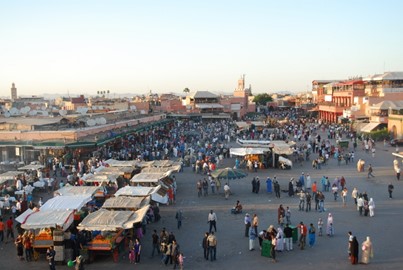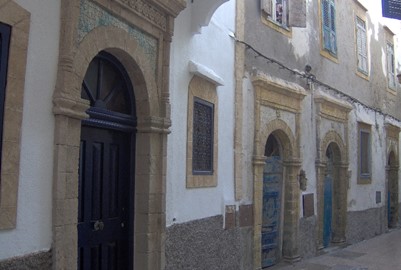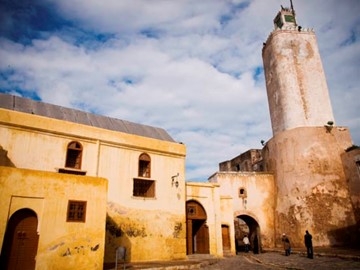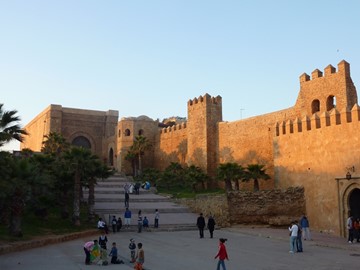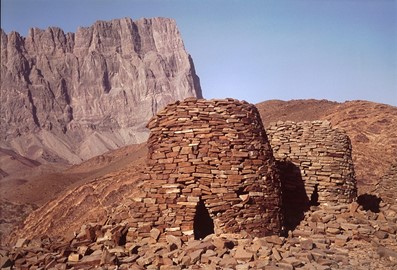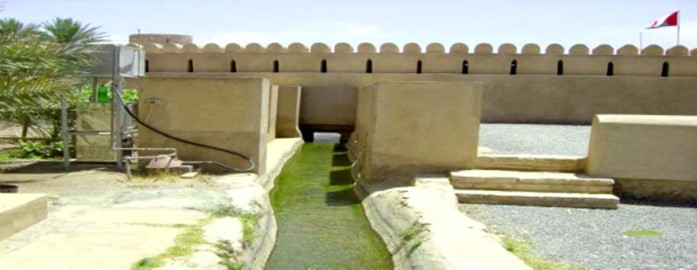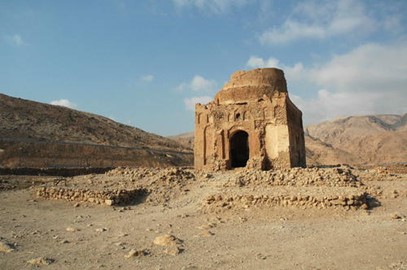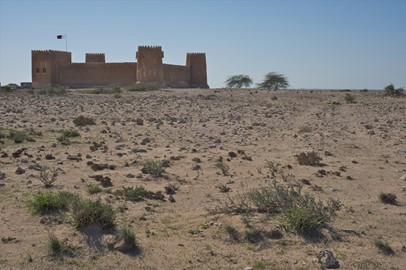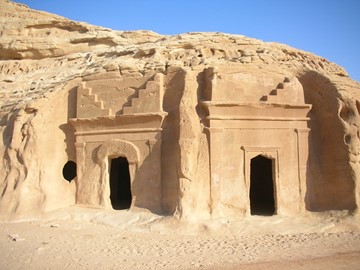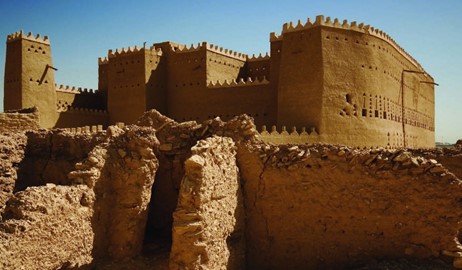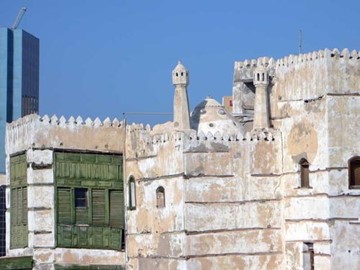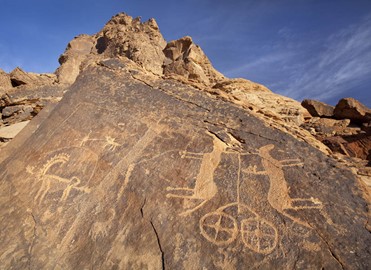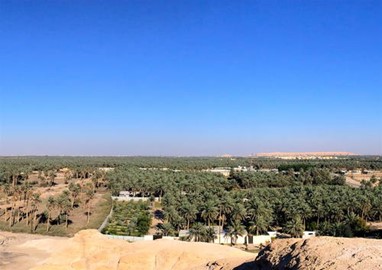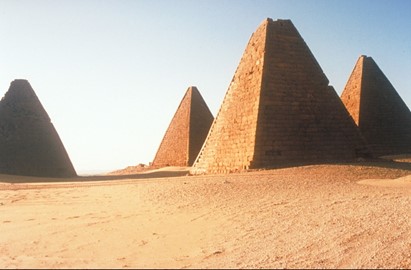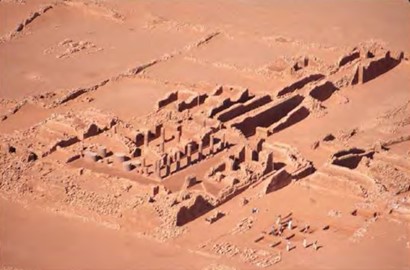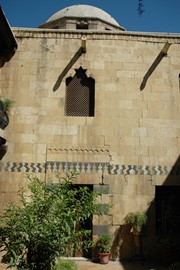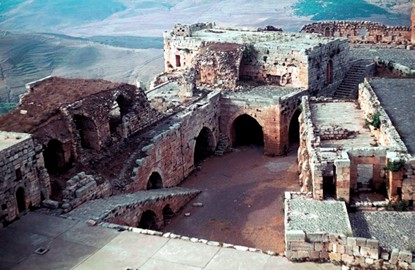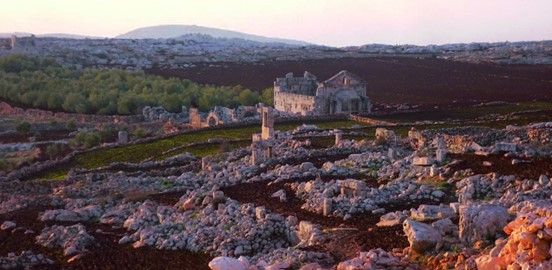region :: arab states
Medina of Marrakesh
The Medina of Marrakesh, a UNESCO World Heritage site in Morocco, is a historic walled city renowned for its vibrant cultural and architectural legacy. Founded in the 11th century, it features a labyrinth of narrow streets, bustling souks, and iconic landmarks like the Koutoubia Mosque, blending Islamic, Berber, and Andalusian influences. Its well-preserved medieval urban fabric and lively atmosphere, exemplified by the Jemaa el-Fnaa square, highlight its significance as a living testament to Moroccan herit... Read More
Ait Ben Haddou
The Ksar of Ait-Ben-Haddou, a UNESCO World Heritage site in Morocco, is a striking example of traditional southern Moroccan architecture. This fortified village, or ksar, features earthen clay structures, including towers and homes, that exemplify pre-Saharan building techniques. Historically a key stop along ancient trade routes, it showcases a blend of defensive design and cultural heritage, preserved for its outstanding universal value.
Medina of Essaouira
The Medina of Essaouira, a UNESCO World Heritage site in Morocco, is a well-preserved example of an 18th-century fortified port city. Its historic charm lies in its unique blend of North African and European architectural influences, featuring whitewashed walls, narrow winding streets, and vibrant blue shutters. Designed by French architect Théodore Cornut, the medina’s layout reflects a planned urban design with a strategic coastal defense system, including ramparts and cannons. Today, it remains a living ... Read More
Meknes
Meknes, a UNESCO World Heritage site in Morocco, is a historic imperial city founded in the 11th century by the Almoravids and later expanded by Sultan Moulay Ismail in the 17th century. Known for its grand architecture, the city boasts impressive landmarks like the Bab Mansour gate, the Mausoleum of Moulay Ismail, and the vast El Hedim Square, blending Islamic and European influences. Its well-preserved medina, fortified walls, and underground prison reflect its rich history as a former capital, offering a... Read More
Medina of Tétouan
The Medina of Tétouan, a UNESCO World Heritage site in Morocco, is a well-preserved historic city reflecting a blend of Andalusian and Moroccan cultures. Its narrow, winding streets are lined with whitewashed buildings, ornate arches, and bustling souks, showcasing traditional architecture and vibrant local life. Established as a key trading hub centuries ago, it retains its unique character through intricate tilework, ancient walls, and a rich multicultural heritage. This fortified medina stands as a testa... Read More
Mazagan (El Jadida)
Mazagan, also known as El Jadida, is a UNESCO World Heritage site in Morocco, recognized for its well-preserved Portuguese fortified city from the 16th century. This coastal settlement showcases a unique blend of European and Moroccan architectural influences, highlighted by its impressive ramparts, bastions, and cistern. Established as a trading post in 1502, it reflects early Renaissance urban planning and military design, making it a significant historical and cultural landmark. Today, it stands as a tes... Read More
Volubilis
Volubilis, a UNESCO World Heritage site in Morocco, is an exceptionally well-preserved ancient Roman city that flourished between the 1st and 4th centuries AD. Originally a Berber settlement, it became a thriving Roman outpost known for its agricultural wealth, particularly olive oil production, and features impressive ruins including a basilica, triumphal arch, and intricate mosaics. The site offers a glimpse into Roman urban planning and daily life, with its excavated remains showcasing a blend of indigen... Read More
Rabat
Rabat, Morocco’s capital, is a UNESCO World Heritage site renowned for its rich history and cultural landmarks. The city features well-preserved sites like the Kasbah of the Udayas, a 12th-century fortress, and the Hassan Tower, an unfinished minaret from the same era, alongside the adjacent Mausoleum of Mohammed V. Its historic medina blends traditional Moroccan architecture with French colonial influences, reflecting Rabat’s strategic role as a coastal and political hub. This combination of ancient monume... Read More
Bahla Fort
Bahla Fort, a UNESCO World Heritage site in Oman, is a remarkable example of medieval Islamic architecture, showcasing the ingenuity of the Banu Nebhan tribe who dominated the region from the 12th to 15th centuries. Constructed primarily from mud brick, this imposing fortress features intricate defensive walls, towers, and a central keep, reflecting the strategic military design of its time. Its historical significance lies in its role as a center of power and trade, as well as its well-preserved state, off... Read More
Bat, Al Khutm and Al Ayn
Bat, Al-Khutm, and Al-Ayn form a UNESCO World Heritage site showcasing one of the most complete and well-preserved collections of 3rd-millennium BCE settlements and necropolises globally. The site features over 100 beehive-shaped tombs, monumental stone towers, and remnants of rural settlements and irrigation systems from the Bronze Age. Recognized in 1988, it highlights ancient trade networks and funerary practices, offering a unique glimpse into early human civilization.
Land of Frankincense
Land of Frankincense, a UNESCO World Heritage site in Oman, encompasses ancient frankincense trade routes and archaeological remains that highlight the region's historical significance. It includes the ruins of medieval ports, such as Al-Baleed and Samhuram, which served as key hubs for exporting frankincense, a valuable resin prized in antiquity for its use in perfumes, incense, and medicine. The site also features the lush Wadi Dawkah, where frankincense trees still grow, illustrating the natural resource... Read More
Aflaj Irrigation Systems
The Aflaj Irrigation Systems, recognized as a UNESCO World Heritage site, are an ancient network of water channels that showcase Oman's ingenious engineering heritage. Dating back over 2,000 years, these systems use gravity to transport water from underground sources and springs to support agriculture and settlements in arid regions. Comprising a complex arrangement of tunnels, channels, and aqueducts, the aflaj demonstrate sustainable water management and communal cooperation, maintained through traditiona... Read More
Qalhat
Qalhat, a UNESCO World Heritage site in Oman, is an ancient port city that flourished between the 11th and 15th centuries as a key trading hub along the Arabian Sea. Once a thriving center for commerce and maritime activity, it was visited by famed explorers like Marco Polo and Ibn Battuta, who noted its prosperity and strategic importance. The site features well-preserved remnants of its past, including the Bibi Maryam Tomb, a striking testament to its historical significance. Today, Qalhat stands as a rem... Read More
Al Zubarah
Al Zubarah, a UNESCO World Heritage site in Qatar, is a well-preserved 18th-century coastal town that offers a glimpse into the region's pearling and trading past. Founded by merchants from Kuwait, it flourished as a key trading hub in the Gulf, connecting local communities with global markets through its strategic location. The site features a fortified settlement with remnants of houses, mosques, and a marketplace, alongside a nearby fort built in 1938 for defense. Archaeological discoveries, including po... Read More
Al Hijr
Al-Hijr, also known as Madâin Sâlih, is a UNESCO World Heritage site in Saudi Arabia renowned for its well-preserved archaeological remains dating back to the Nabataean Kingdom (1st century BCE to 1st century CE). The site features over 100 monumental tombs carved into sandstone cliffs, adorned with intricate facades that reflect a blend of Nabataean, Hellenistic, and Roman architectural influences. In addition to the tombs, Al-Hijr includes ancient wells, inscriptions, and remnants of settlements that high... Read More
At Turaif District
At-Turaif District, a UNESCO World Heritage site in Saudi Arabia, is a historic area renowned for its well-preserved mud-brick architecture and cultural significance. Established in the 15th century, it served as the first capital of the Saudi dynasty, showcasing traditional Najdi urban design with palaces, mosques, and residential quarters. The site reflects the region’s political and religious heritage, offering insights into the early governance and societal structure of the Arabian Peninsula. Its restor... Read More
Jeddah
Jeddah, known as the Gate to Makkah, is a historic port city in Saudi Arabia recognized as a UNESCO World Heritage site for its rich cultural and architectural legacy. Its old town, Al-Balad, features centuries-old coral stone buildings, traditional souks, and ancient mosques, reflecting its role as a key trading hub and pilgrimage entry point. Today, Jeddah blends this heritage with modern developments, making it a vital cultural and economic center in the region.
Rock Art in the Hail Region
Rock Art in the Hail Region, a UNESCO World Heritage site in Saudi Arabia, features an extraordinary collection of ancient petroglyphs and inscriptions dating back thousands of years. These artworks, etched into sandstone outcrops, depict human and animal figures, hunting scenes, and symbolic motifs, offering a glimpse into the prehistoric cultures of the Arabian Peninsula. Recognized for its outstanding universal value, the site showcases the artistic and historical significance of early human expression i... Read More
Al Ahsa Oasis
Al-Ahsa Oasis, a UNESCO World Heritage site in Saudi Arabia, is a remarkable cultural and natural landmark renowned for its historical significance and unique landscape. This sprawling oasis features over 2.5 million date palms, sustained by an intricate network of springs and ancient irrigation systems, showcasing traditional agricultural practices that date back centuries. The site also includes archaeological remains, historic settlements, and traditional architecture, reflecting its role as a vital hub ... Read More
Gebel Barkal
Gebel Barkal, a UNESCO World Heritage site in Sudan, is a small mountain revered for its historical and cultural significance. It served as a royal cemetery during the ancient Kingdom of Kush and features well-preserved pyramids, temples, and palaces dating back to the 15th century BCE. The site is also notable for its association with the Egyptian god Amun, whose temple lies at the mountain's base, reflecting its role as a key religious center in antiquity. Today, it stands as a testament to the region's r... Read More
Meroe
The Island of Meroe, a UNESCO World Heritage site in Sudan, is an ancient archaeological treasure that served as the heartland of the Kingdom of Kush from the 8th century BC to the 4th century AD. This semi-desert landscape features the royal city of Meroe with its pyramids, temples, and water management systems, alongside the religious sites of Naqa and Musawwarat es Sufra. Recognized in 2011, it showcases a blend of local Kushite culture with influences from Egypt, Greece, and Rome, reflecting its histori... Read More
Sanganeb
Sanganeb, a UNESCO World Heritage site in Sudan, is a pristine coral reef atoll in the Red Sea, renowned for its exceptional biodiversity and striking underwater landscapes. It features diverse marine habitats that support a rich array of species, including sharks, manta rays, and vibrant coral communities, making it a globally significant ecosystem. The site’s clear waters and complex reef structures offer a unique window into the northernmost tropical coral systems, earning it recognition for its outstand... Read More
Aleppo
The Ancient City of Aleppo, a UNESCO World Heritage site in Syria, is renowned for its rich history dating back to the 2nd millennium BC, serving as a key trading hub along the Silk Road. Its well-preserved architecture includes a vast citadel, medieval mosques, madrasas, and souqs, showcasing a blend of Arab, Persian, and Islamic influences. Despite suffering damage from conflict, it remains a testament to the region’s cultural and historical significance, with ongoing efforts to restore its iconic landmar... Read More
Crac des Chevaliers
Crac des Chevaliers, a UNESCO World Heritage site in Syria, is a remarkably preserved medieval castle built by the Knights Hospitaller in the 12th century. Renowned for its impressive Crusader architecture, the fortress features robust stone walls, towers, and intricate defensive systems, showcasing the military engineering of its time. It served as a key stronghold during the Crusades, symbolizing the power and influence of the Christian military orders in the region. Today, it stands as a testament to Syr... Read More
Ancient Villages of Northern Syria
The Ancient Villages of Northern Syria, a UNESCO World Heritage site, consist of around 40 well-preserved settlements from the 1st to 7th centuries, offering a remarkable glimpse into rural life during Late Antiquity and the Byzantine period. Abandoned between the 8th and 10th centuries, these villages feature intact remains of dwellings, churches, pagan temples, and bathhouses, showcasing the transition from Roman paganism to Byzantine Christianity. Recognized in 2011, the site highlights the inhabitants' ... Read More
